I figured I’d class it up a bit this week and cover banded manes. Banded manes are a grooming style common in showing western pleasure, halter, and showmanship. It pops up in other weird places from time to time as well, such as Hunter Under Saddle:
Photo blatantly ripped off from Jennifer Buxton, who has been super tolerant of my “educational use” of her photos.
It’s not ideal, but I’ve seen it at the local pleasure shows were the same horses compete in English pleasure, western pleasure, and showmanship throughout the day. Ideally--for a two day show--you want to fuss with your horse’s mane once and be done with it. It can be hard enough to untack, re-tack, change, and (time willing) eat between classes let alone redo a mane.
A banded mane starts with a pulled mane and the length of a pulled mane varies, usually somewhere between 3 to 8 inches. Granted, I know that’s a little like saying the Disneyland is located somewhere Mexico and Portland, OR.
It's there somewhere.
For a banded mane on a stock horse, it’s usually closer to 3 to 5 inches. Short and neat and the keywords here. I vary the length of the mane based on the shape of the neck. In Roxy’s case, she has a thick and cresty neck that you’d see on bulldog type stock horse or a crossbreed. I decided to give her a slightly longer mane to draw attention to the curve and shape of her neck and downplay the width.
However, long manes on thin necked horses can make their necks fugly-thin:
It's all about proportions.
I start my banded mane roughly the same way I started my long one. I mix fresh clay, usually with a few drops of water. Instead of a slug-like shape, I roll my clay into a thinner snake-like shape. However, I don't want it garden-snake thin. More like "I wouldn't want to step on that snake in flip flops" width.
When I'm working on a long mane, I tend to be a bit organic--letting the mane spread into the shape it wants. But with a pulled mane, I have to be more specific. I spread out the mane evenly into a thin and flat shape on the top of the neck. Then I use my favorite tool to cut off the excess clay forming the shape in purple below:
I'd like to fess up at this point that I neglected to take a few in progress photos early in this process. It wasn't until I was halfway through with it that it occurred to me that "oh, maybe this would be something other people would like to know how to do." Seriously, it's a miracle I can still find my way back to my apartment every evening.
Like I did with the long mane, I rough in a few zebra stripes to get an idea of where I want to add visual "interest" in the final project. Then I shape two narrow parallel trenches down the entire length of the mane.
This is all done with my faithful tool. Or tools rather as I have multiple copies of the same shaped tool floating around my apartment (and purse--and in my car.)


This tool is crucial for the next step. I press the tip of the tool flat into the wet clay, toward the top of the mane. I use the tip to shape divots, representing the space between the bands on a real horse. These should be nice shallow divots, like the ones left on a golf tee by a skilled golfer. Not like the gopher holes I leave when I'm bored enough to stray back onto a golf course.
When I'm done with the divots, I go back with my tool and press the tip into the divots again, but this time at a perpendicular angle. I'm trying to deepen the spaces between and create a sloped edge to each band without putting forth the effort of actually sculpting every edge in extreme detail.
When I'm done with the divots, I go back with my tool and press the tip into the divots again, but this time at a perpendicular angle. I'm trying to deepen the spaces between and create a sloped edge to each band without putting forth the effort of actually sculpting every edge in extreme detail.
In the photo above, I've also started detailing the top of the mane between the neck and the band. I press my tool in at different angles, but always pointing toward where the band would be to simulate the gathering of hair.
More detailing at the top of the mane, shown from the opposite side of the neck.
Ever so delicately, I brush the tip of my tool over the trenches. For most of my sculpting, I will press the tool into the clay, but in the this case I barely want to make contact with the clay. The end result is a slight indication of 1/9th scale rubber bands.
I finish sculpting the rest of the mane the same way I sculpted the rest of the long mane then set the model aside to dry.
I won't be painting this Roxy myself. She left with Mandy Hood earlier this week for color. However, I've painted a few of these banded manes before. I suggest when you paint your model, keep in mind that these rubber bands only come in four or five colors. If you're lucky, your local tack store may carry white, black, grey, and one color of brown. Obviously, there are many shades of "brown" colored horses so the odds that this one color of band will perfectly match your horse are extremely long. A horse owner will by the closest color and call it good.
When painting bands, I try to paint them with a color of paint that is close but not a perfect match. This will get the band to "pop" from the rest of mane without being unfashionable or unrealistic.
I finish sculpting the rest of the mane the same way I sculpted the rest of the long mane then set the model aside to dry.
I won't be painting this Roxy myself. She left with Mandy Hood earlier this week for color. However, I've painted a few of these banded manes before. I suggest when you paint your model, keep in mind that these rubber bands only come in four or five colors. If you're lucky, your local tack store may carry white, black, grey, and one color of brown. Obviously, there are many shades of "brown" colored horses so the odds that this one color of band will perfectly match your horse are extremely long. A horse owner will by the closest color and call it good.
When painting bands, I try to paint them with a color of paint that is close but not a perfect match. This will get the band to "pop" from the rest of mane without being unfashionable or unrealistic.

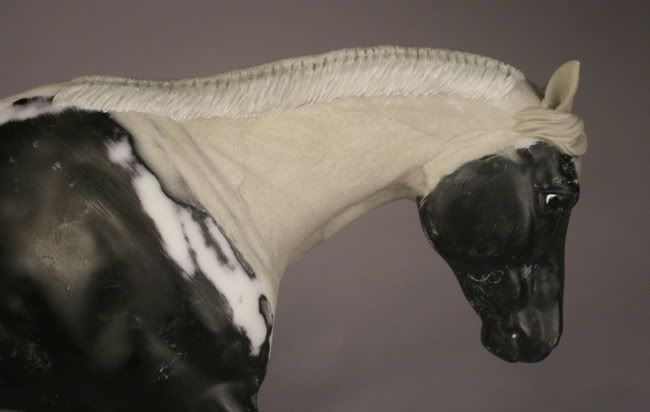
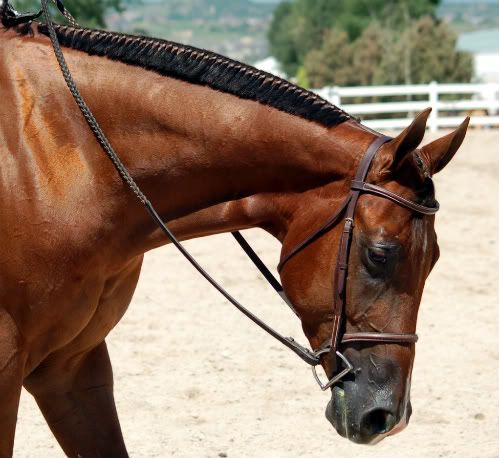
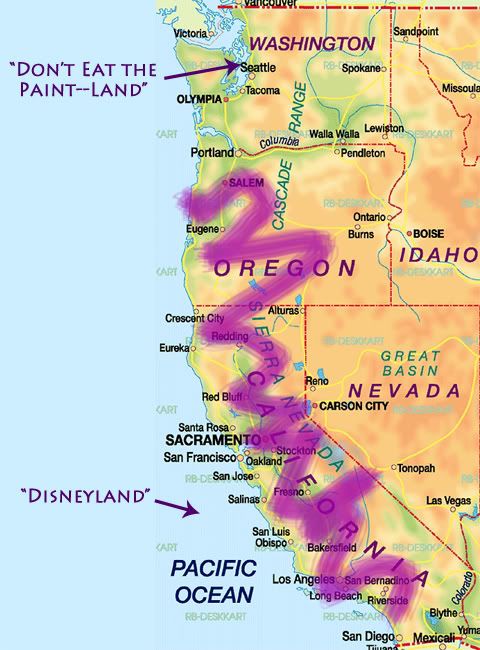
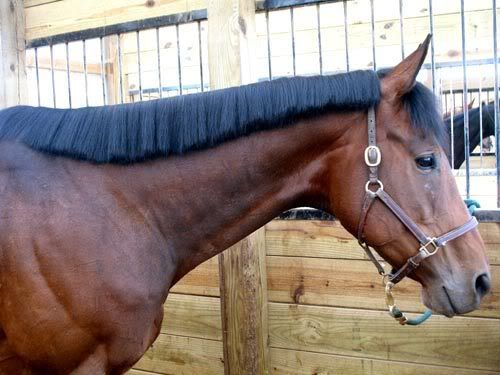


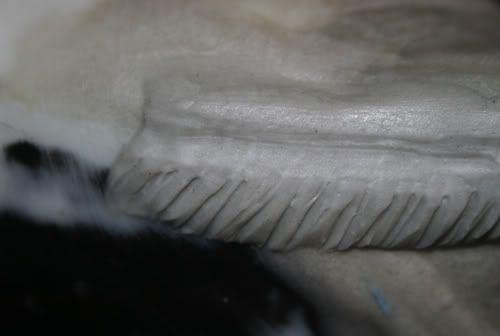

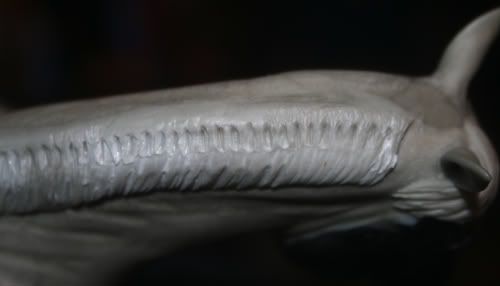







5 comments:
Thank you so much for continuing this! I went out to Dick Blick and bought a copy of your favorite tool. You're right, it's more useful than the other tools in the set. Are you going to to Arabian manes next? I'm very interested to see your take on that and Farah manes.
I'll get there eventually. I can't tell you--in all honesty--that I DO NOT plan topics that far in advance. ;)
No problem. I know how it is when you plan things online. I've got your blog bookmarked. Thanks again for sharing your knowledge with us!
And btw: the Breyer running stallion with the elephant balls is now a girl. I took a drink to steady my nerves.
Quote: "...the Breyer running stallion with the elephant balls is now a girl. I took a drink to steady my nerves."
LOL!!!
Oh, I do love this blog.
Thanks for another great post, and love what you've done for this Roxy. PRETTY! :)
How to get in touch with the casino app by Bus.com
Find out how to download the app for your iPhone 화성 출장안마 and iPod 김천 출장안마 touch. 화성 출장안마 Find out how 속초 출장마사지 to download the app for 경주 출장샵 your iPhone and iPod touch.
Post a Comment